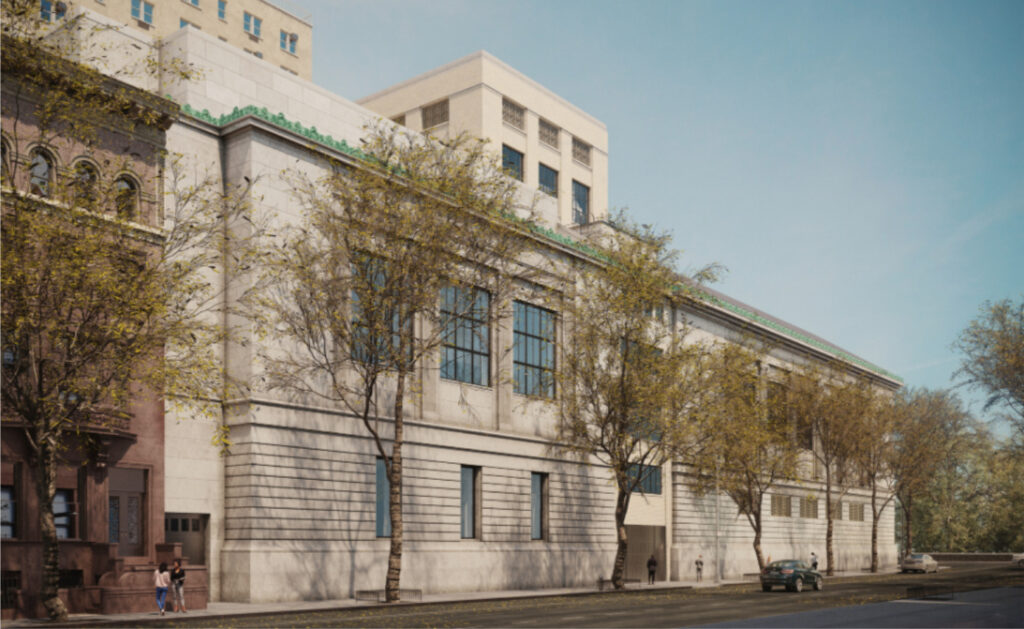New York’s foremost museum of history expands to house American LGBTQ Museum
Designed by Robert A.M. Stern Architects, the expansion will provide a permanent home for the American LGBTQ+ Museum.
Louise Mirrer, president and CEO of the New-York Historical Society, has announced that the institution will expand its building on Central Park West, adding more than 70,000 square feet of program space for itself and for The American LGBTQ+ Museum, New York’s first museum dedicated to LGBTQ+ history and culture, which will make its permanent home at New-York Historical.
The design by Robert A.M. Stern Architects, which was unanimously approved and highly praised by the Landmarks Preservation Commission for its respect for the past and solicitation of community input, will provide New-York Historical with additional classrooms, galleries, collections study areas, and a state-of-the-art compact storage facility for the institution’s renowned Patricia D. Klingenstein Library.

“With great foresight, our Trustees acted in 1937 to purchase the lot adjacent to New-York Historical’s building, knowing that our growing collections and evolving programs for scholars, students, educators, and the public would someday need room to expand,” said Dr. Louise Mirrer, New-York Historical’s president and CEO. “Now that day has arrived—and how gratifying it is to realize the dream of telling the American story in all its complexity in state-of-the-art educational spaces and a brand-new gallery dedicated to the struggle for civil rights of the American LGBTQ+ community.”
“We’re delighted to partner with New York’s foremost museum of history to build a new museum dedicated to an exploration and celebration of the richness and diversity of LGBTQ+ history and culture in America,” said Richard Burns, chair, board of directors, The American LGBTQ+ Museum. “The respect and rigor with which New-York Historical has approached this process, including their consultation with local communities, mirrors our own commitment to building a thoughtful, welcoming, queer, and inclusive experience for our visitors and partners. We look forward to bringing a dynamic new museum to life within this cherished, deeply-respected, and growing New York City landmark.”
While the new building is under construction, The American LGBTQ+ Museum will partner with New-York Historical to develop programming in the Museum’s existing building and outdoor spaces, bringing the voices, perspectives, actions, and achievements of this community to the foreground for hundreds of thousands of annual visitors and New York City schoolchildren. Upon completion, The American LGBTQ+ Museum will occupy the entirety of the expansion’s fourth floor and encompass two galleries, access to the roof garden, and areas for offices and storage.
New-York Historical expects to undertake the expansion as a phased project. The first phase will begin in summer 2022 and will focus on the below-grade library stacks. A second phase will construct galleries, classrooms, and other spaces once target funding is achieved.
About the New-York Historical Society
New York City’s oldest museum, the New-York Historical Society Museum & Library was founded in 1804. The Patricia D. Klingenstein Library—one of the most distinguished in the nation—fosters research through its outstanding collections, which include more than 10 million items. The Museum presents groundbreaking history and art exhibitions as well as public programs that convey the stories of New York and the nation’s diverse populations to the broadest possible public. The New-York Historical Society is located at 170 Central Park West. Follow the museum on social media at @nyhistory on Facebook, Twitter, Instagram, YouTube, and Tumblr.
About The American LGBTQ+ Museum
The American LGBTQ+ Museum preserves, investigates, and celebrates the dynamic histories and cultures of lesbian, gay, bisexual, transgender, and queer people, as well as those of the emergent and adjacent identities among our communities. The exhibitions and programs seek to advance LGBTQ+ equality through the lens of social justice movements, including, but not limited to, race, gender, class, immigration, and disability. The museum envisions a world in which all people work toward and experience the joy of liberation.





